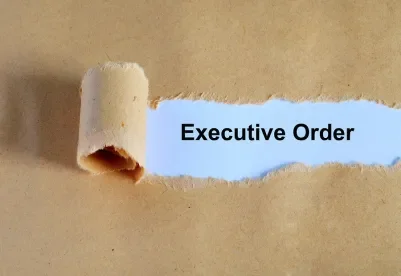On January 19, 2021, the Federal Acquisition Regulatory Council published the final rule amending the Federal Acquisition Regulation (“FAR”) in accordance with President Trump’s Executive Order 13881, “Maximizing Use of American-Made Goods, Products, and Materials.” As we discussed in our prior blog articles here (discussing the September 2020 proposed rule) and here (discussing the July 15, 2019 order), the Executive Order required significant changes to the regulations implementing the Buy American Act, 41 U.S.C. §§ 8301-8305 (“BAA”). The final rule varies very little from the September 14, 2020 proposed rule (discussed in greater detail here). Accordingly, the final rule amends applicable FAR clauses with three key impacts:
-
Increasing the domestic content requirement – to 55% for most products, and to 95% for products consisting “wholly or predominantly” of iron or steel, or a combination of both (and including new definitions to clarify further what types of products are covered by the heightened requirements);
-
Removing the commercially available-off-the-shelf (“COTS”) exception for products consisting “wholly or predominantly” of iron or steel, or a combination of both (but leaving a partial exception in place for COTS fasteners made wholly or predominantly of iron or steel); and
-
Increasing price preferences for domestic products – from 6% to 20% for large businesses, and from 12% to 30% for small businesses.
The final rule and the new FAR clauses are effective almost immediately – on January 21, 2021 – although it is not required in new solicitations until February 22, 2021.
Domestic Content Requirements
The BAA mandates that for a domestic end product to be “manufactured” in the United States, it must be both: (a) manufactured in the U.S.; and (b) the majority of the product’s content also must be sourced domestically. For nearly 70 years, this “content requirement” was interpreted as requiring at least 50% of the cost of all components to be manufactured in the United States. But the new final rule amends key FAR provisions to implement EO 13881’s increase of this requirement to at least 55%, imposing even steeper requirements for products made wholly or predominantly from iron or steel (as discussed below). The final rule includes changes to the definitions of “domestic construction material,” and “domestic end product,” in FAR 25.003 (as well as corresponding clauses at FAR 52.225-1, 52.225-3, 52.225-9, 52.225-11) to reflect this increase.
Domestic Content Requirements for Iron and Steel Products
Historically, the BAA has not differentiated between iron, steel, and other manufactured end products. But the Executive Order changed all that. As such, the final rule imposes new domestic content requirements for products consisting “wholly or predominantly” of iron or steel, or a combination of both. The FAR will be amended to incorporate a 95% domestic content requirement for such products. Practically speaking, this means that all iron and steel end products must be made in the U.S., and the component materials must be sourced from the U.S., as well.
The final rule imposes further changes to the definitions of “domestic construction material,” and “domestic end product,” in FAR 25.003 (as well as corresponding clauses at FAR 52.225-1, 52.225-3, 52.225-9, 52.225-11) to reflect that for products consisting “wholly or predominantly of iron or steel or a combination of both, an end product [is] manufactured in the United States, if the cost of foreign iron and steel[1] constitutes less than 5% of the cost of all the components used in the end product.” The final rule also introduces a new definition for the phrase “Predominantly of iron or steel or a combination of both” – meaning “the cost of the iron and steel content exceeds 50% of the total cost of all its components.” Further, the “cost of iron and steel is the cost of the iron or steel mill products (such as bar, billet, slab, wire, plate, or sheet), castings, or forgings, utilized in the manufacture of the product.” Notably, the final rule recognizes the perceived difficulty that lies in estimating the costs of iron and steel content, requiring only a “good faith estimate” by the contractor of the cost of iron or steel components (excluding COTS fasteners).
Removing COTS Exception for Iron and Steel Products
As explained in our prior blog, since 2009, the “domestic content test” of the BAA (the second of the two-part test we described above) has been waived for COTS items. However, the final rule explains that leaving this waiver wholly in place would create a loop hole big enough to drive a tank through, having very little effect on the procurement of iron and steel end products. This is because the bulk of iron and steel products acquired by the Government are, in fact, COTS items used in construction materials. Thus, the final rule amends the FAR to re-apply the domestic content test of the BAA to COTS items consisting “wholly or predominantly” of iron or steel, or a combination of both.
How do you know if your product is made “predominantly” of iron or steel? A new definition helps clarify this (and the preamble to the new rule also includes an example). Basically, if 50% or more of the total cost of components for the end product is iron or steel, then the product is covered; if it is less than 50%, then the product is not considered “predominantly” of iron or steel. For example, let’s say that you have a steel safe that retails for $1,000 and for which all the components cost $500. The retail price ($1,000) doesn’t matter – only the cost of the components ($500). So if at least 50% of the cost of the components is iron or steel ($250), then the product is considered predominantly made of iron or steel, and at least 95% of the total component cost (iron + steel + other components) ($225) must be sourced domestically. But if more than 50% of the cost of the components consists of other non-iron or steel components (e.g., plastic dials; plastic handles; plastic inserts/shelves; rubber footings; other exempt components; etc.), then the product is not considered predominantly made from iron or steel.
Notably, the COTS waiver still is applicable to other COTS products, including COTS iron and steel fasteners – defined as “a hardware device that mechanically joins or affixes two or more objects together,” including “nuts, bolts, pins, rivets, nails, clips, and screws.” As such, not only can COTS fasteners be purchased without regard to the content of foreign iron or steel, but also contractors are permitted to exclude the cost of COTS fasteners from its good faith estimate of cost (as illustrated above). Be aware, however, that this only is a partial exception – in order to satisfy the BAA regulations, these “other” COTS products and COTS fasteners must still be manufactured (as an end-product) in the U.S., satisfying the first of the two-part test we described above.
Increasing Domestic End Product Price Preferences
As discussed in our prior blog articles, the BAA and implementing regulations do not outright prohibit the Government purchase of foreign end products. Rather, the BAA simply encourages or incentivizes the use of domestic end products by imposing certain price preferences for those items sourced domestically. The final rule implements EO 13881 by increasing the price preference from 6% to 20% for large businesses, and from 12% to 30% for small businesses.
Timing and Implementation
The new rule is effective January 21, 2021, with a requirement to be included in all new solicitations by February 22, 2021. The final rule is unclear as to whether the Government will attempt to modify existing contracts to include the new rule. While it seems likely that the Government might seek to change your contract, the new rule does not require it and any such change will require a formal contract modification that may entitle a contractor to some kind of equitable relief.
Consequently, if you are performing on a contract that includes the prior versions of FAR 52.225-1, 52.225-3, 52.225-9 or 52.225-11, you still may be able to meet the lower standards and also take advantage of the more robust COTS waiver for all COTS products. A Contracting Officer may disagree with you, concluding (wrongly) that the new updates automatically apply across the board, but the clauses that you (and the Government) agreed to when the contract was signed will continue to control, notwithstanding these new updates. So please make sure to read your contract, and please be careful if the Government tries to update these clauses as a unilateral change.
Summary and Conclusion
The following table summarizes key changes brought on by the final rule:
| U.S. Origin Parts or Materials (Supplies) | U.S. Origin Parts or Materials (Construction) | COTS Items | |
| End Products Made Wholly or Predominantly of Iron or Steel (or Both) | Increasing from ≥ 50% to ≥ 95% | Increasing from ≥ 50% to ≥ 95% | Domestic content requirements not waived for iron and steel end products, except for fasteners |
| Other End Products | Increasing from ≥ 50% to ≥ 55% | Increasing from ≥ 50% to ≥ 55% | Domestic content requirements waived for COTS items. |
| Domestic Item Price Preference | Increasing from 6% to 20% (large businesses) and 12% to 30% (small businesses) | Increasing from 6% to 20% | Increasing from 6% to 20% (large businesses) and 12% to 30% (small businesses) |
Domestic content requirements also are expected to change for Department of Defense procurements through DFARS Case 2019-D045, Maximizing Use of American-Made Goods. However, we do not expect those rules to vary widely from this new rule; they will largely be conforming changes to match the DFARS Buy American Act contract clauses to the new FAR rules and the requirements of EO 13881. The DOD price preferences (50% for both large and small businesses) will remain undisturbed.
Though these changes only are applicable to acquisitions subject to the BAA, all contractors are encouraged to familiarize themselves with these final changes – taking stock of items manufactured using steel or iron (whether “wholly” or “predominantly”), and assessing and documenting their compliance with the BAA’s new requirements. This includes a review of products acquired through the supply chain, as the impact of these changes also will flow through the entire supply chain.
Please also be aware that older contracts may include the older clauses, and so you may find yourself with different requirements under different contracts. Make sure you understand what you have promised to deliver, and ensure that you are beginning to comply with this new regime. If you are expecting President Biden to roll back these requirements, you’d best hold your breath. These kinds of heightened “Buy American” requirements are here to stay.
FOOTNOTES
[1] The final rule also adds a new definition for “foreign iron and steel,” in an effort to better differentiate between end products “produced” versus “manufactured” in the United States. “Produced in the United States means that all manufacturing processes of the iron or steel must take place in the United States, from the initial melting stage through the application of coatings, except metallurgical processes involving refinement of steel additives.”




 />i
/>i
